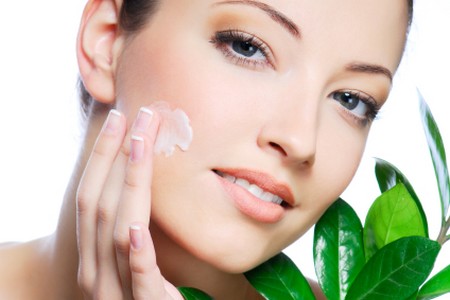Best Way to Understand the Skin’s Ageing Process
In order to be able to care for your skin properly you need to understand the skin’s ageing process. So if you didn’t pay attention in biology classes, here is a little basic information on skin physiology for you to digest.
The structure of the skin is made up of two main layers. The epidermis – the uppermost layer – is the visible part, which is constructed of a horny layer of skin containing the dead skin cells that we slough off during exfoliation. The second layer – the dermis, or ‘true’ skin – is composed of connective tissue: collagen and elastin fibres which, by keeping it resilient and springy, are the skin’s support network. Within the dermis, you’ll also find sebaceous glands (which secrete sebum, the skin’s natural lubricant) and the blood vessels that supply vital nourishment and oxygen to the cells.
From our mid-twenties the time bandits set to work: the rate of cell renewal slows down, moisture levels drop and collagen production is reduced, causing loss of elasticity. Meanwhile, the production rate of line-forming free radicals -those nasty molecules that degenerate cells -speeds up and eventually the skin’s muscle tone deteriorates and its support structure collapses.
How you age is, to a certain extent, determined by your genes, but before you blame your parents for frown lines so deep that only Polyfilla would disguise them, let me reassure you that this doesn’t mean that you will age at the same rate as they did. We are now far more clued up on what we should and should not be doing to our skin than our parents’ generation. And besides, each of us ages differently, so just because you are forty doesn’t mean that you will have fifty per cent grey hair, five wrinkles on your forehead and a ‘turkey neck’ like your mother.
Dr Catherine Orentreich, a dermatologist at the world-famous Orentreich Medical Group LLP in New York, is one of the leading authorities on skin ageing. Being well acquainted with one of her patients, who at thirty-three has younger-looking skin than when she was in her teens, I decided that Dr Orentreich was the ideal person to advise on age-defence strategies.
Dr Orentreich believes in the traditional formula of cleansing, exfoliating and moisturising. She is also hot on protection: ‘Everyone should be wearing a sunblock on their face,’ she adds. I asked Dr Orentreich how she would treat the skin of a woman in her thirties who is beginning to see signs of ageing. ‘I might prescribe a Retin-A preparation, a “vitamin-A derivative” that improves the skin’s texture, to be used as part of her skincare routine. In addition, a gentle skin peel, using trichloroacetic acid, could be carried out three to four times a year,’ she advises.
Categories
Advertisements
Recent Articles
 How to Understand Bed Sizes – A Small Guide
How to Understand Bed Sizes – A Small Guide How to Select Some Must Have Kitchen Accessories
How to Select Some Must Have Kitchen Accessories Best Way to Change a Car Tire
Best Way to Change a Car Tire Best Way to Write an Affirmation
Best Way to Write an Affirmation Best Way to Take Charge of Your Financial Life
Best Way to Take Charge of Your Financial Life Best Way to Survive a Party When You Don’t Know Anyone
Best Way to Survive a Party When You Don’t Know Anyone Best Way to Stop Self Sabotaging Yourself
Best Way to Stop Self Sabotaging Yourself Best Way to Start Journal Writing
Best Way to Start Journal Writing Best Way to Speak with a Powerful Voice
Best Way to Speak with a Powerful Voice Best Way to Simplify Your Life
Best Way to Simplify Your Life Best Way to Respond to a Put-Down
Best Way to Respond to a Put-Down Best Way to Reduce Acne Breakouts
Best Way to Reduce Acne Breakouts Best Way to Recover from Dining Disasters
Best Way to Recover from Dining Disasters Best Way to Quit Your Job Gracefully
Best Way to Quit Your Job Gracefully Best Way to Make Your Own Website
Best Way to Make Your Own Website



Leave a Reply